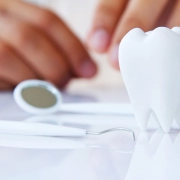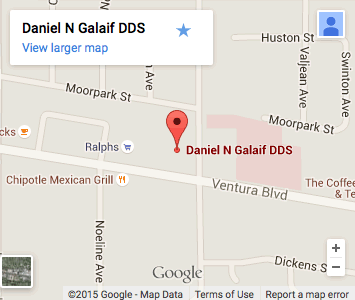The Benefits of Sealants
A dental sealant is a thin, plastic coating painted on the chewing surface of your tooth, usually on the back teeth (premolars and molars). Sealants can prevent tooth decay and cavities for many years, protecting the chewing surfaces from cavities by covering them with a protective shield that blocks out germs and food. Once applied, sealants can protect against up to 80% of cavities, according to the American Dental Association. Sealants quickly bond into the depressions and grooves of the teeth, forming a protective shield over the enamel of each tooth. Although thorough brushing and flossing can remove food particles and plaque from smooth surfaces of teeth, they cannot always get into all the smaller openings in back teeth to remove all the food and plaque that may be lodged there over time.
A cavity is a permanent hole in your tooth. If not treated, it will get bigger, can cause discomfort and extreme pain, and may get infected. The most common place for cavities is in the grooves of the back teeth. Sealants are a quick, easy, and painless way to prevent cavities. A tooth without a cavity is obviously stronger and healthier than a tooth with a filling or untreated decay. Sealants are also less expensive and easier to apply than fillings. Fillings are considered restorative applications. Sealants, on the other hand, are preventive. A filling is used to repair damage that has already occurred to a tooth, usually from dental decay. A sealant is used to cover a portion of a tooth to prevent damage from occurring in the future.
Dental Fillings
A filling is necessary to restore a tooth after a cavity or hole has formed from tooth decay. Tooth decay is damage to a tooth’s enamel from oral acids. The acids dissolve the minerals that make up the enamel, such as phosphorous and calcium. This dissolution weakens the tooth enamel and causes holes or cavities to form in the material. Once a cavity has formed and in order to treat the tooth, Dr. Galaif removes the decayed portion of the enamel, cleans the area, and fills in the hole. This filling prevents additional damage to the tooth by blocking the entry of oral bacteria that could cause an infection or greater decay.
Dental Sealants
Sealants may be applied to a tooth that has not suffered any decay. They are usually added to the chewing surfaces of the molars. These areas are deeply grooved and allow food and plaque to easily settle on the teeth. The sealants help fill the grooves, while simultaneously forming a barrier to protect the teeth from oral acids. Since oral acids are byproducts that are released by the bacteria of the mouth after digestion, the deep grooves of the molars are the perfect setting for decay. Bacteria feed on carbohydrates that are left in the mouth, and the deep crevices trap leftover debris from meals and snacks. The bacteria mixes with the debris to form plaque, which sticks to the teeth and allows the acid to make direct contact with the enamel before the acid is significantly diluted by saliva. As a result, tooth decay is more likely. Dental sealants shield the tooth enamel from the oral acid and plaque, thus your teeth are protected from decay.
Who Should Get Sealants?
Because of the likelihood of developing decay in the depressions and grooves of premolars and molars, children and teenagers are typical candidates for sealants – applying them to their permanent molars and premolars as soon as these teeth come in. In this way, the sealants can protect the teeth through the cavity-prone years of ages 6 to 14. In some cases, dental sealants may also be appropriate for baby teeth, such as when a child’s baby teeth have deep depressions and grooves. Because baby teeth play such an important role in holding the correct spacing for permanent teeth, it is critical to keep these teeth healthy so they are not lost too early. When the first adult molars come into your child’s mouth (around age 6), most parents do not realize their children have these molars because they usually come in at the back of the mouth, behind the baby teeth. The most likely location for a cavity to develop in your child’s mouth is on the chewing surfaces of those back teeth. If you run your tongue over this area in your mouth, and you will feel the reason why – these surfaces are not smooth as other areas of your teeth are. Instead, they are filled with tiny grooves referred to as “pits and fissures,” which trap bacteria and food particles. The bristles on a toothbrush can’t always reach all the way into these dark, moist little crevices. This creates the perfect conditions for tooth decay. What’s more, a child’s newly erupted permanent teeth are not as resistant to decay as adult teeth are. The hard enamel coating that protects teeth changes as it ages to become stronger. Fluoride, which is found in toothpaste and some drinking water — and in treatments provided at Dr. Galaif’s office — can strengthen enamel, but again, it’s hard to get fluoride into those pits and fissures on a regular basis. This is why sealants are such an important, preventative measure in children.
Adults without decay or fillings in their molars can also benefit from applying sealants to their teeth.
How Are Sealants Applied?
Applying a sealant is a simple and painless process. It takes only a few minutes for your dentist or hygienist to apply the sealant and to seal each tooth.
The application steps are as follows:
- First, the teeth to be sealed are thoroughly examined and cleaned.
- If any minimal decay is found, it is gently removed.
- Each tooth is then dried, and cotton or another absorbent material is put around the tooth to keep it dry.
- An acid solution is put on the chewing surfaces of the teeth to roughen or “etch,” which helps bond the sealant to the teeth.
- The teeth are rinsed and dried.
- The sealant is then painted onto the tooth enamel, where it bonds directly to the tooth and hardens. Sometimes a special curing light is used to help the sealant harden.
Dr. Galaif also has an air abrasive machine that uses a powder to clean the grooves before we place the sealants, which can get the sealants to last twice as long. We seal the 6-year molars when they come in and then seal the 12-year molars when they come in, resealing the 6-year molars which can keep your child cavity free until they are 18.
How Long Do Sealants Last?
Sealants can protect teeth from decay for up to 10 years, but they need to be checked for chipping or wearing at regular dental check-ups. Dr. Galaif can then replace sealants as necessary.
Does Insurance Cover the Cost of Sealants?
Many insurance companies do cover the cost of sealants, but often only for patients younger than 18. Check with your dental insurance carrier to determine if sealants are covered under your plan.
Taking Care of Your Sealants
Sealed teeth require the same conscientious dental hygiene as unsealed teeth. Your child should continue to brush and floss his or her teeth daily, and have regular professional cleanings. Checking for wear and tear on the sealants is important, and they should last around 3 years. During this time, your child will benefit from a preventive treatment proven to reduce decay by 80%.
While the incidence of cavities in children remains quite high, preventing cavities is always better than treating them, and it’s also much cheaper!
Can Sealants Be Placed Over Cavities?
Sealants can be used over areas of early decay to prevent further damage to your tooth. Because some sealants are clear, your dentist can keep an eye on the tooth to make sure the sealant is doing its job.
Are There Any Side Effects?
With the exception of an allergy that may exist, there are no known side effects from sealants.
Is There BPA In Sealants?
Yes, there is a tiny amount of BPA in sealants but not enough to cause you or a loved one any harm. In fact, you get more exposure to BPA by simply touching a receipt, using cosmetics or coming in contact with dust.
To find out if your child or children could benefit from Sealants, call us to make an appointment at (818) 789-6789 or visit the appointment page on our Web site:
Contact Us


